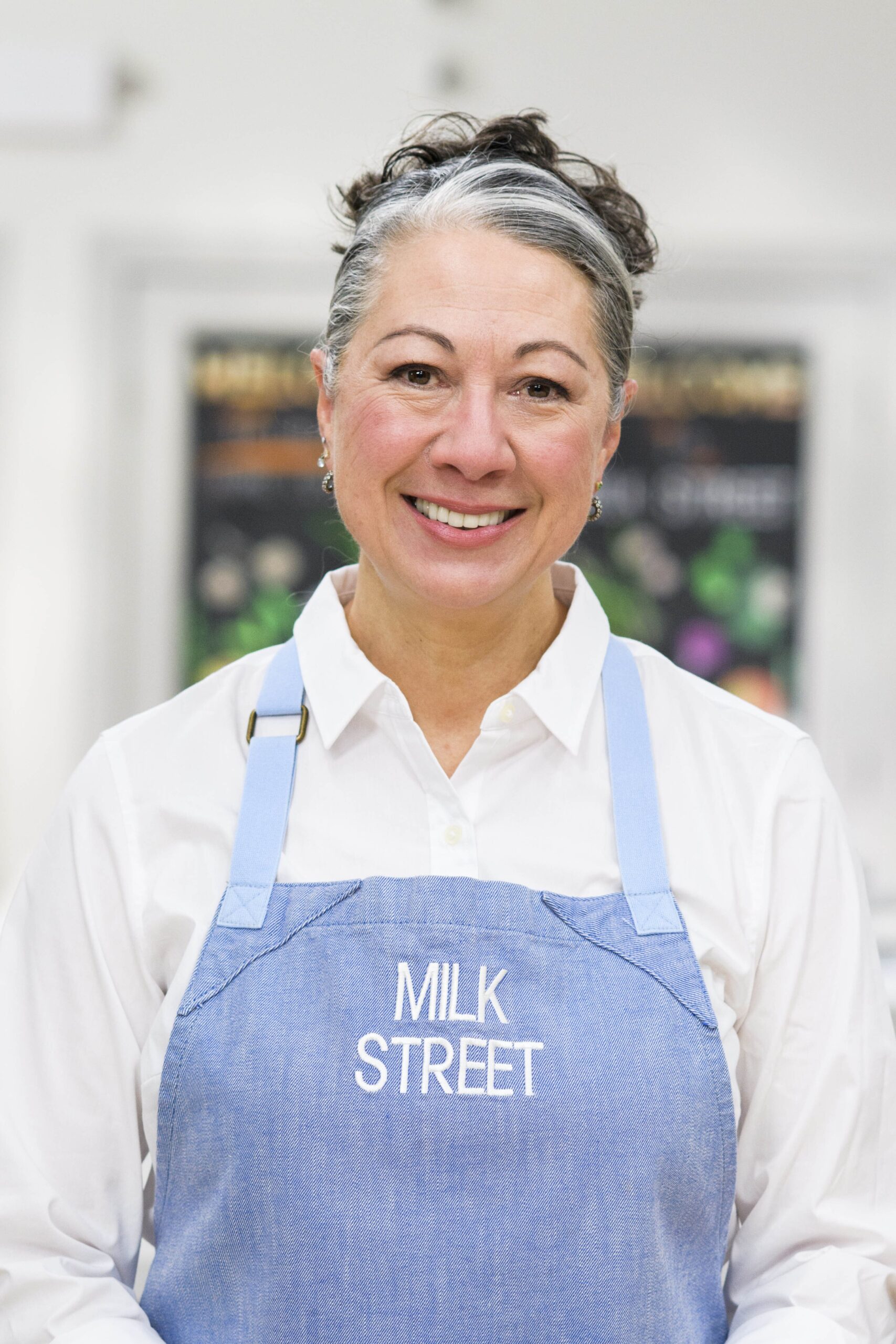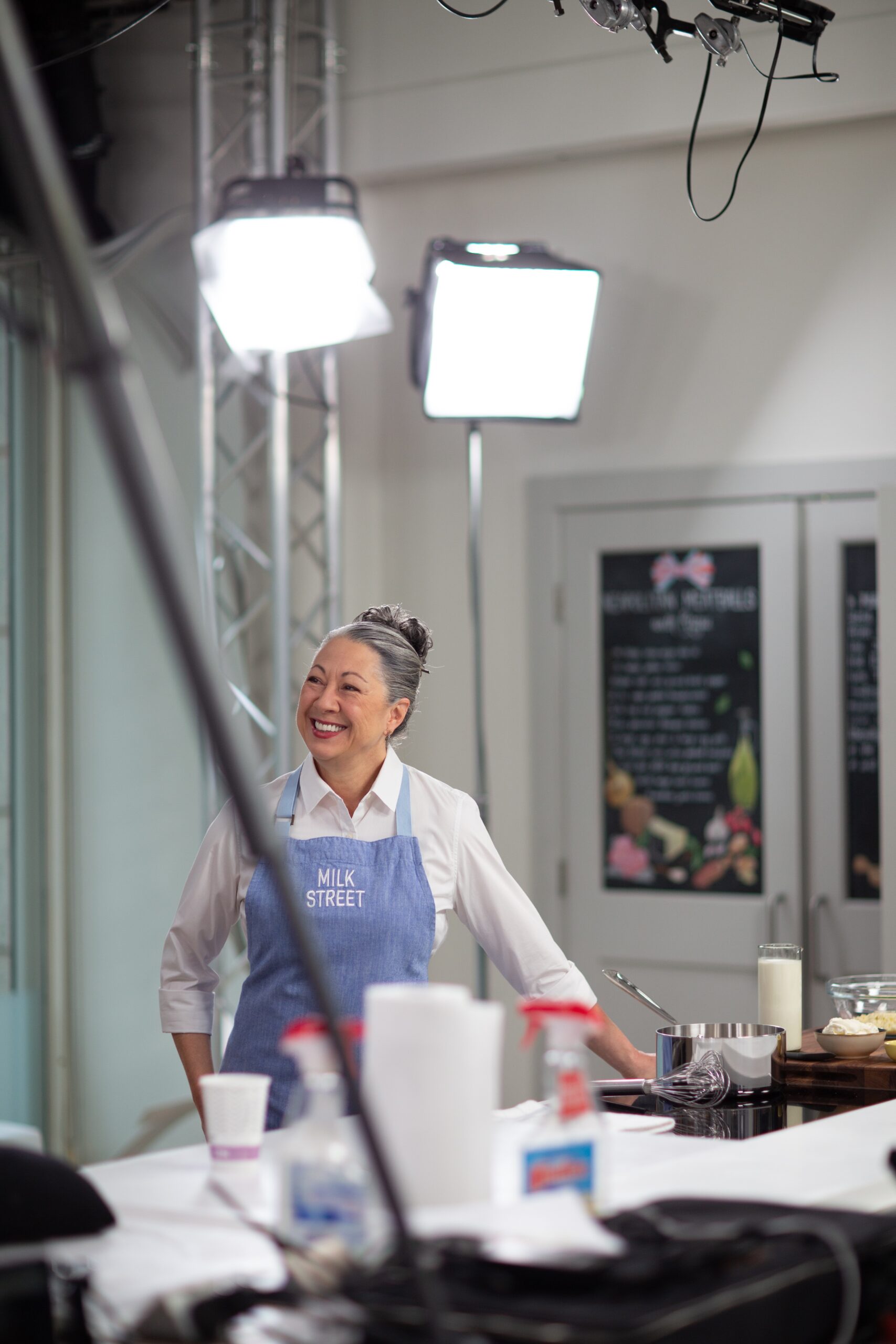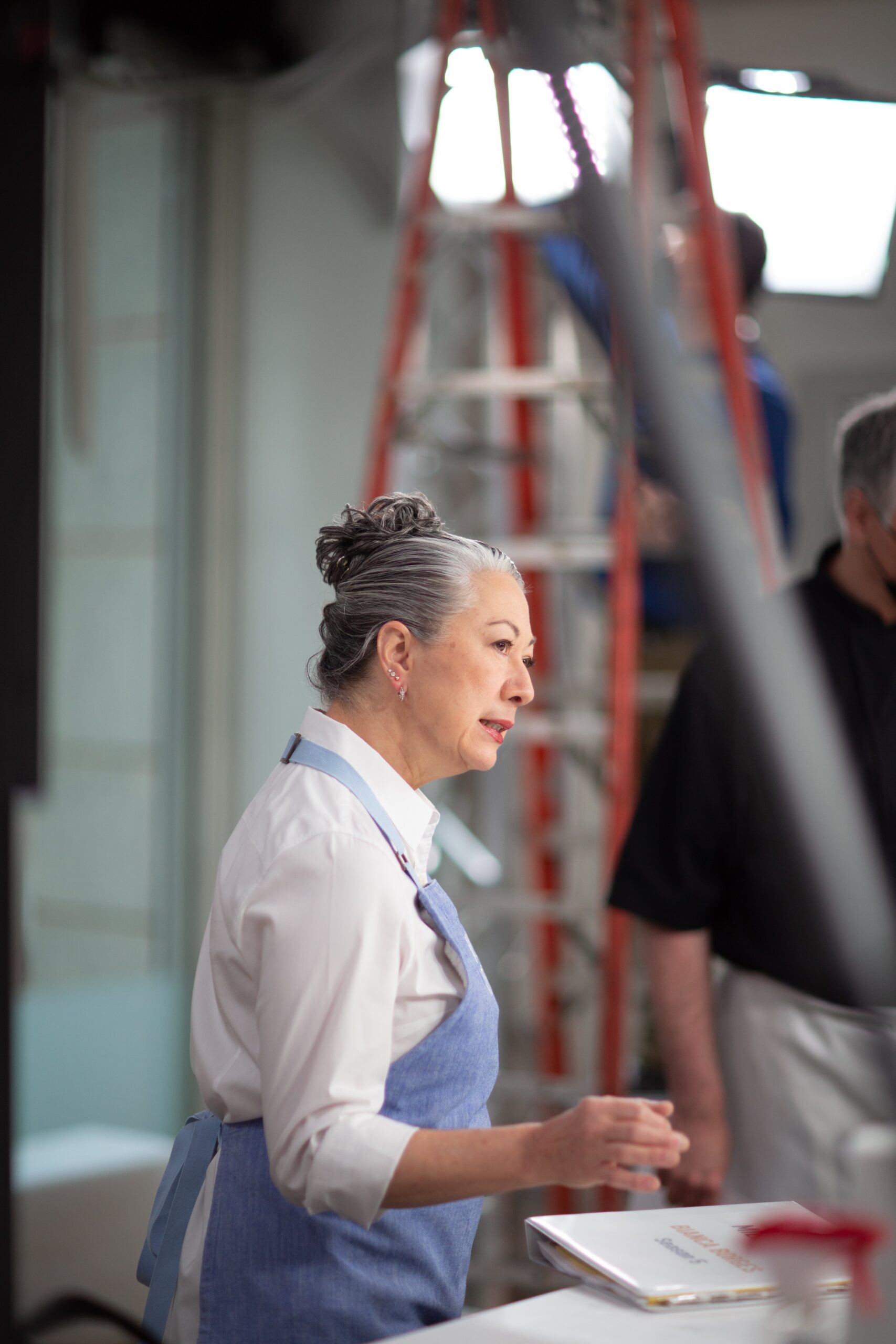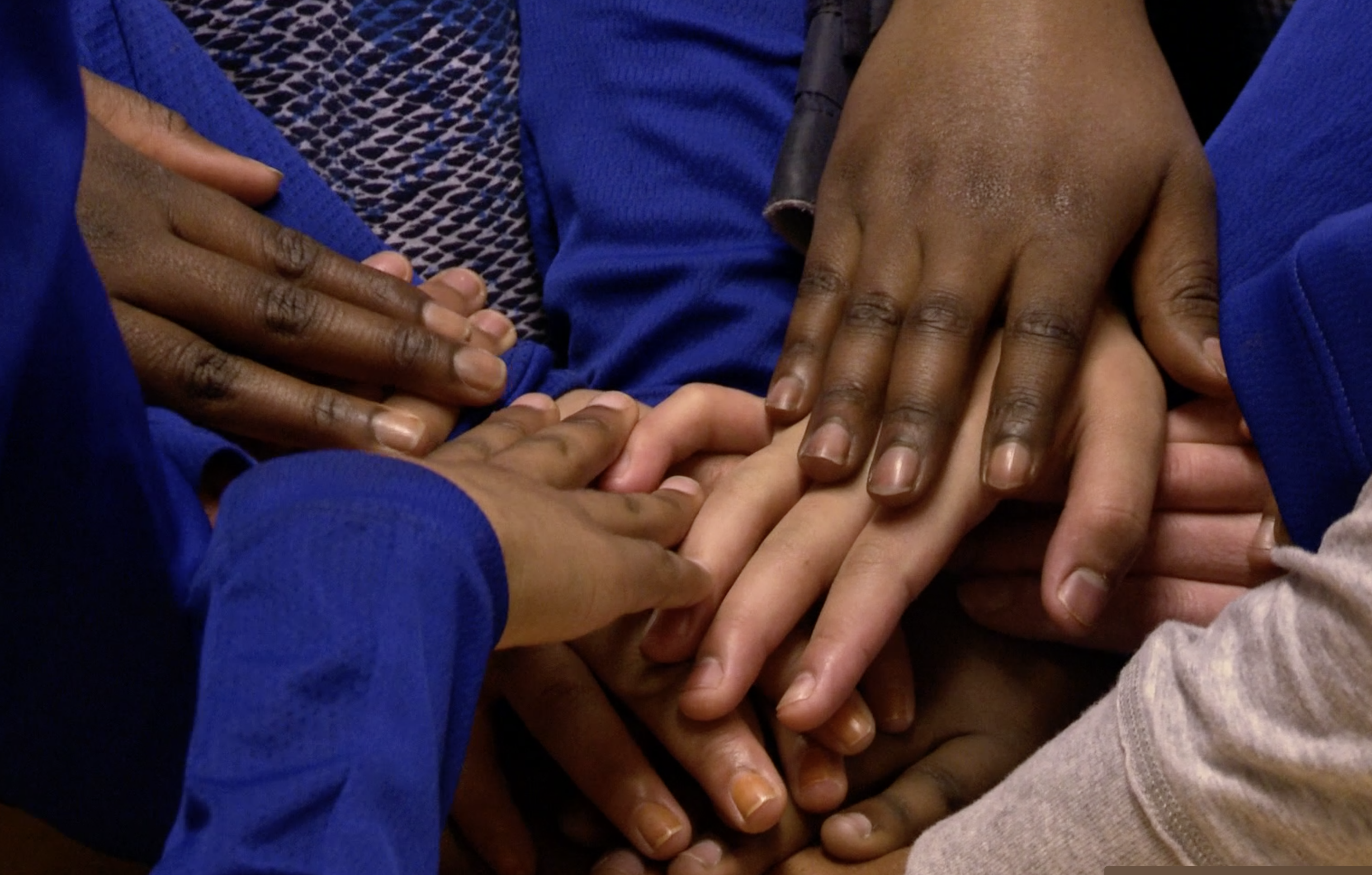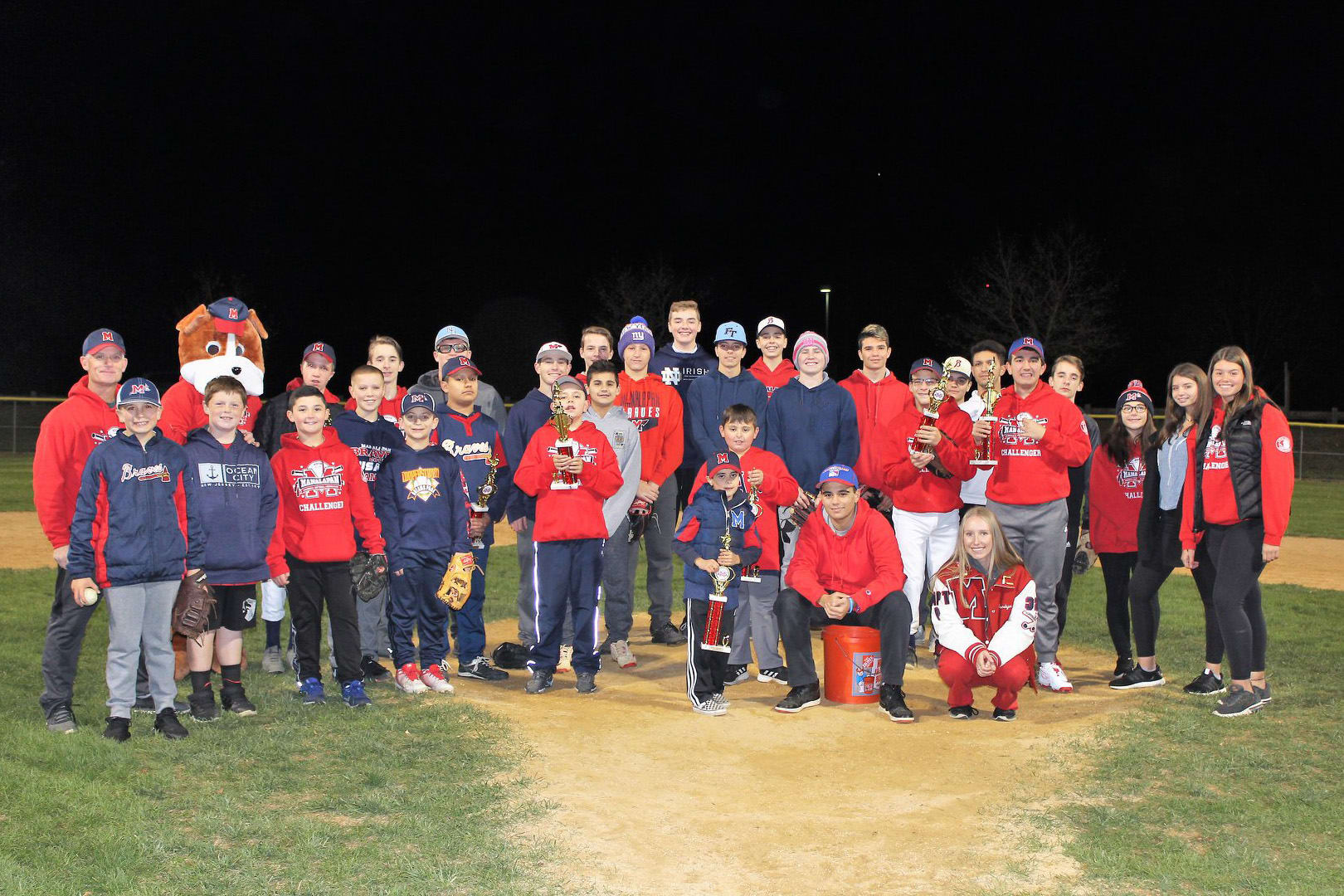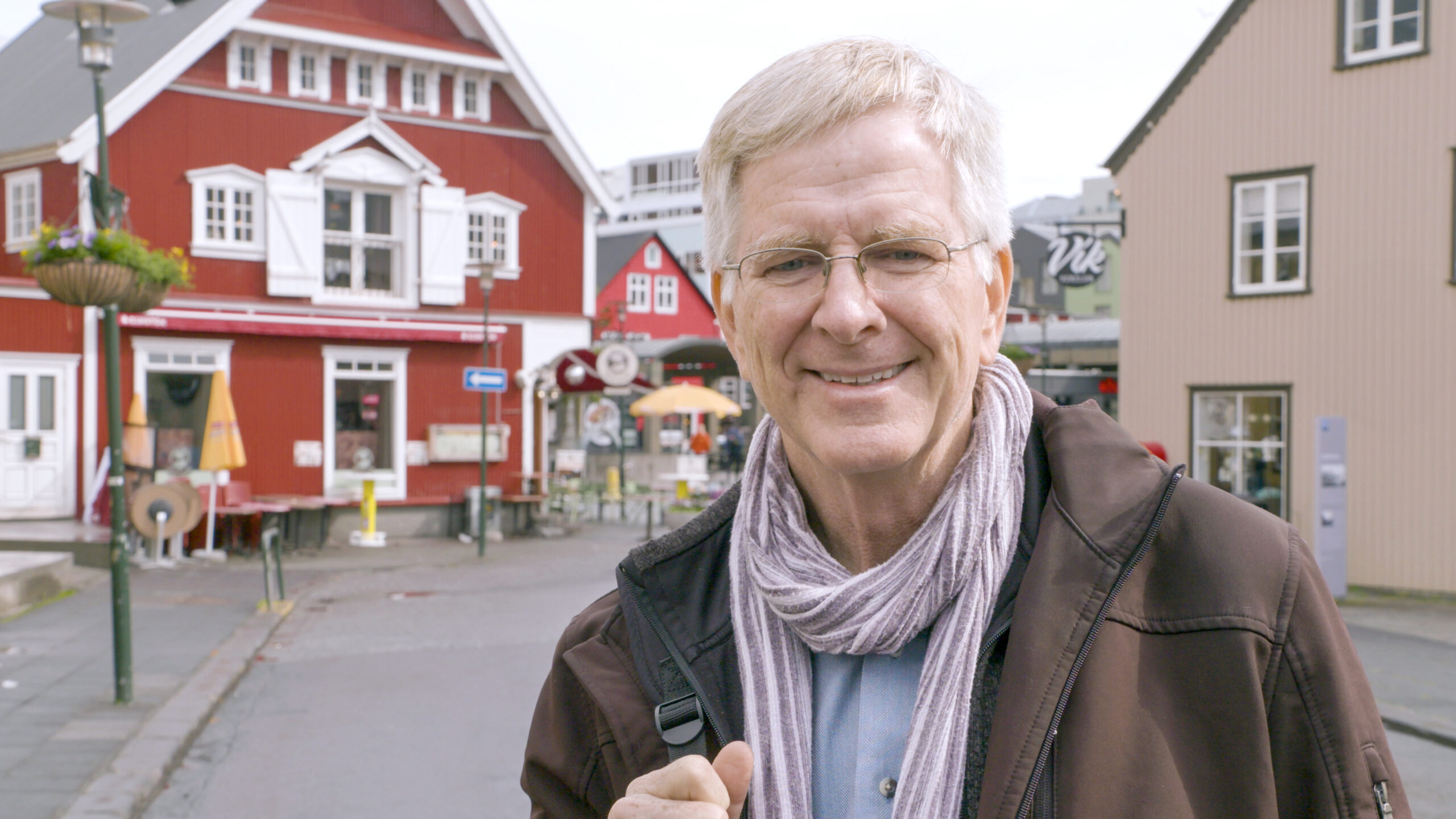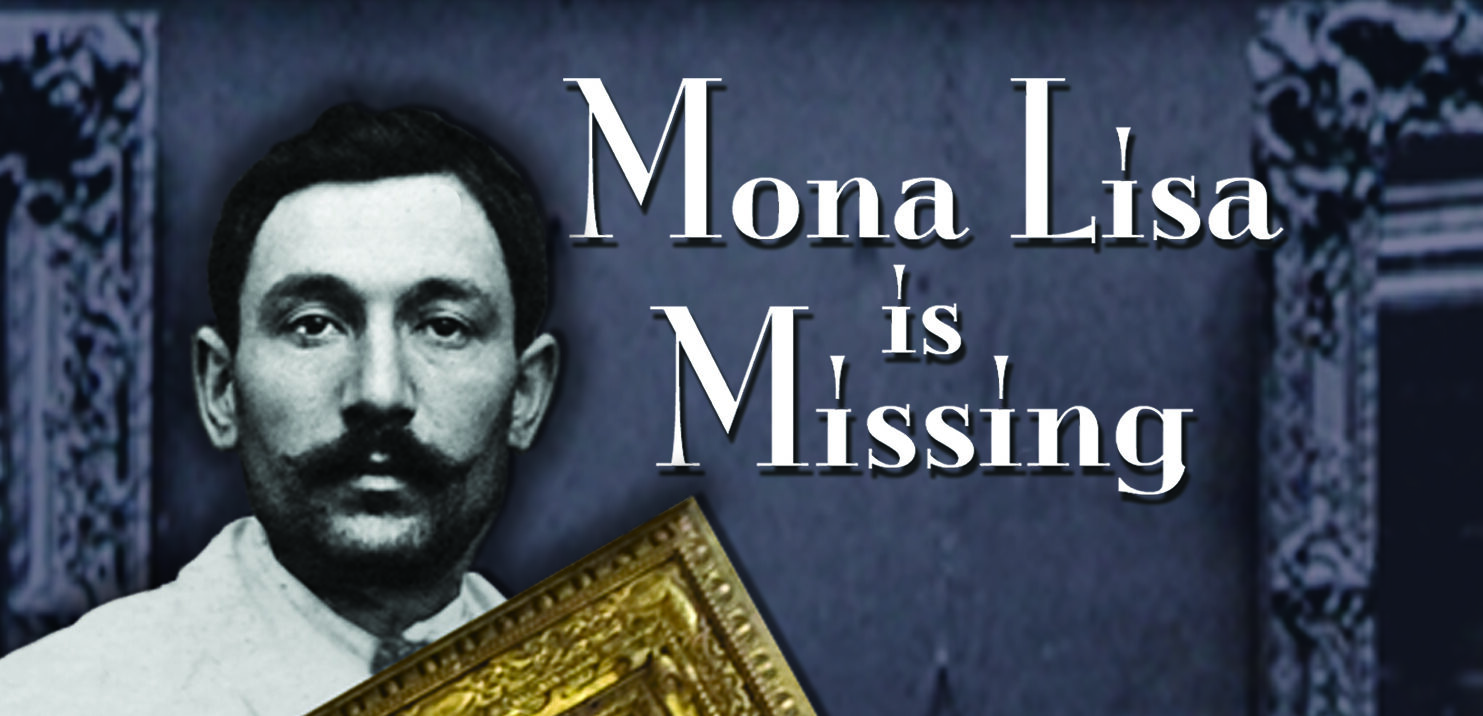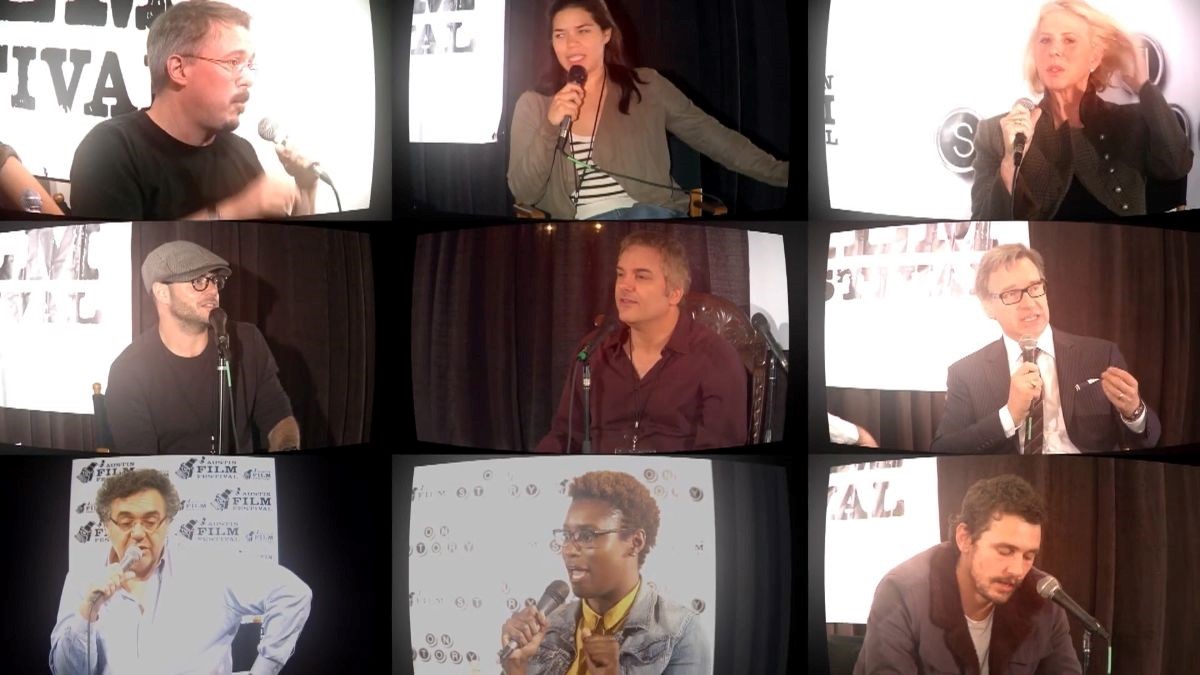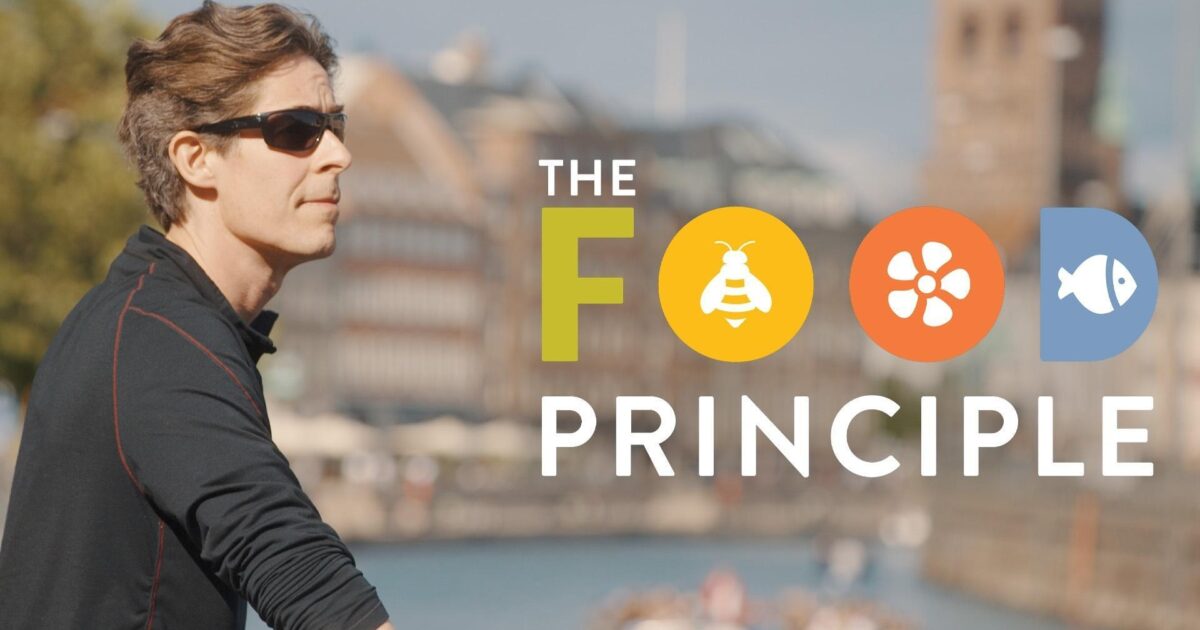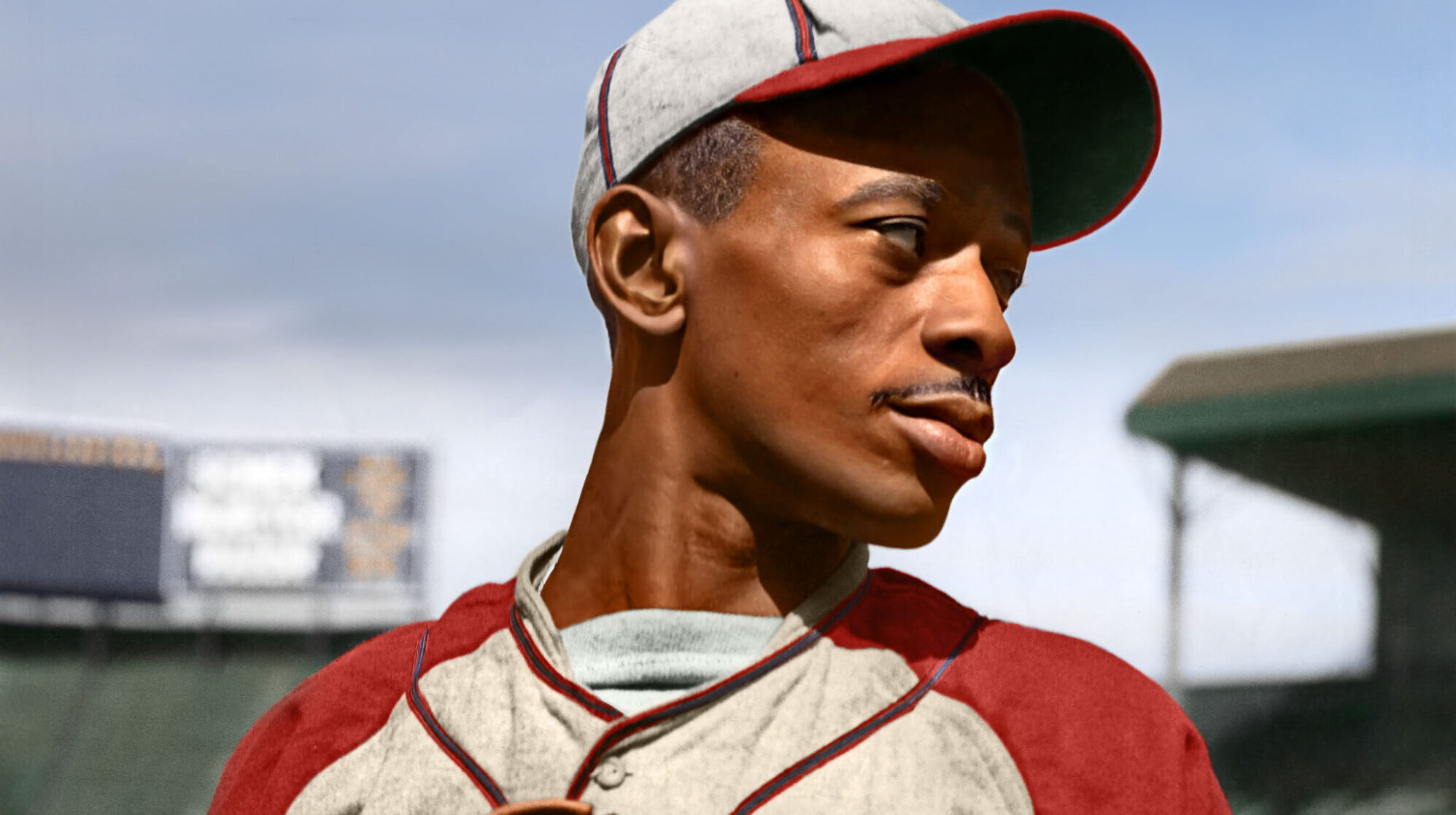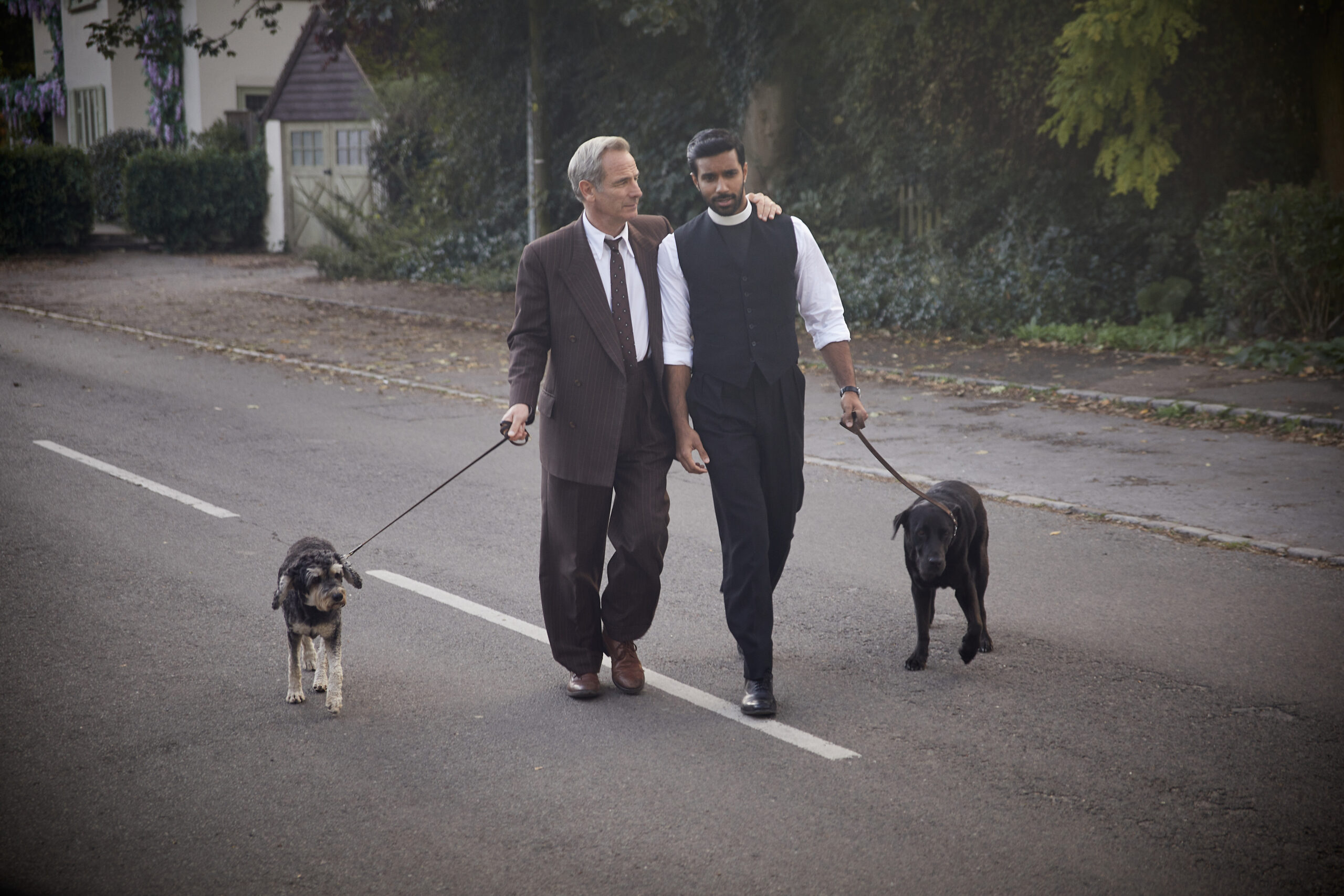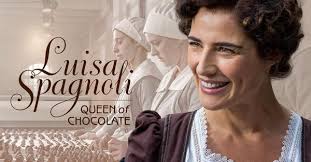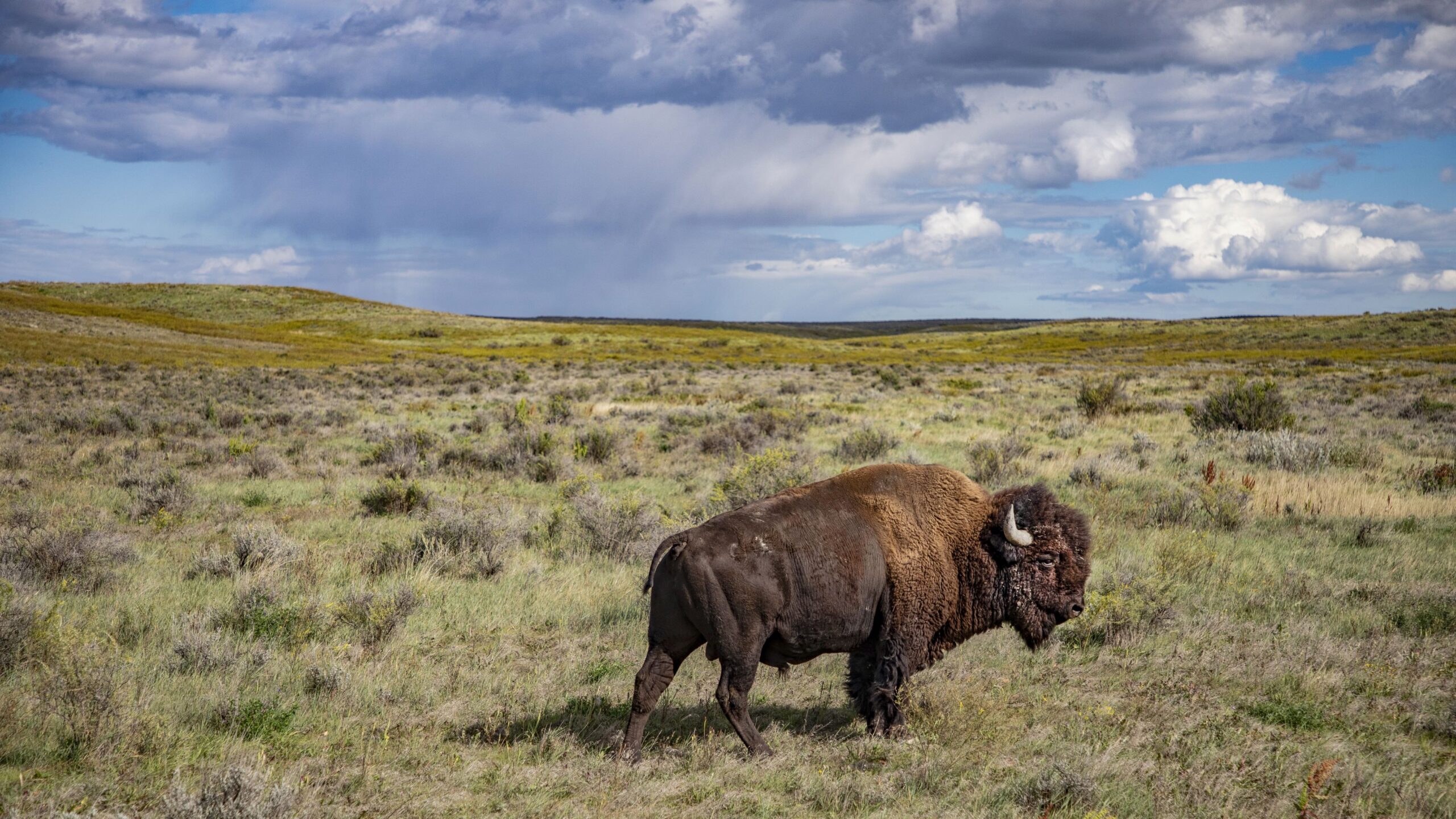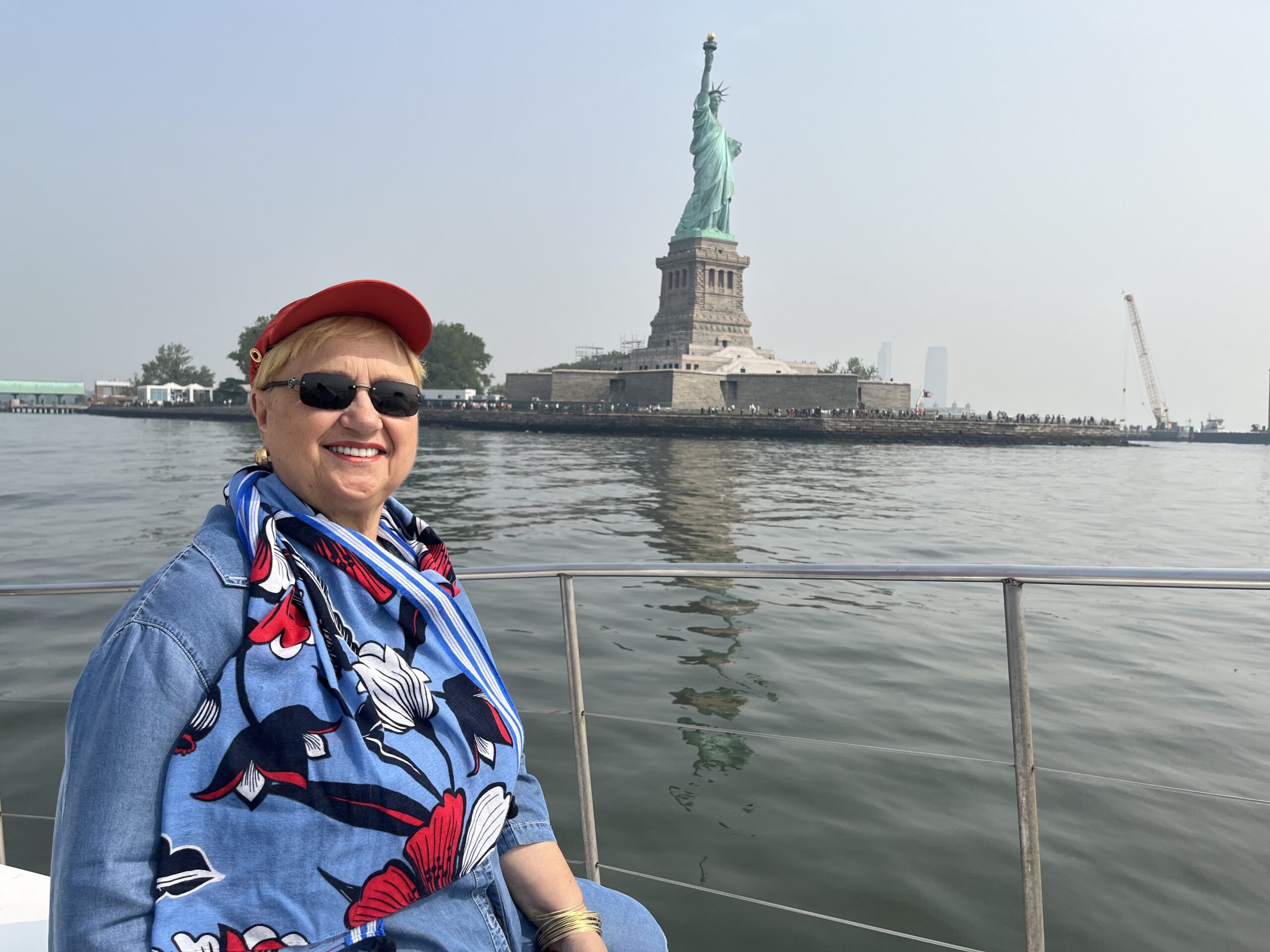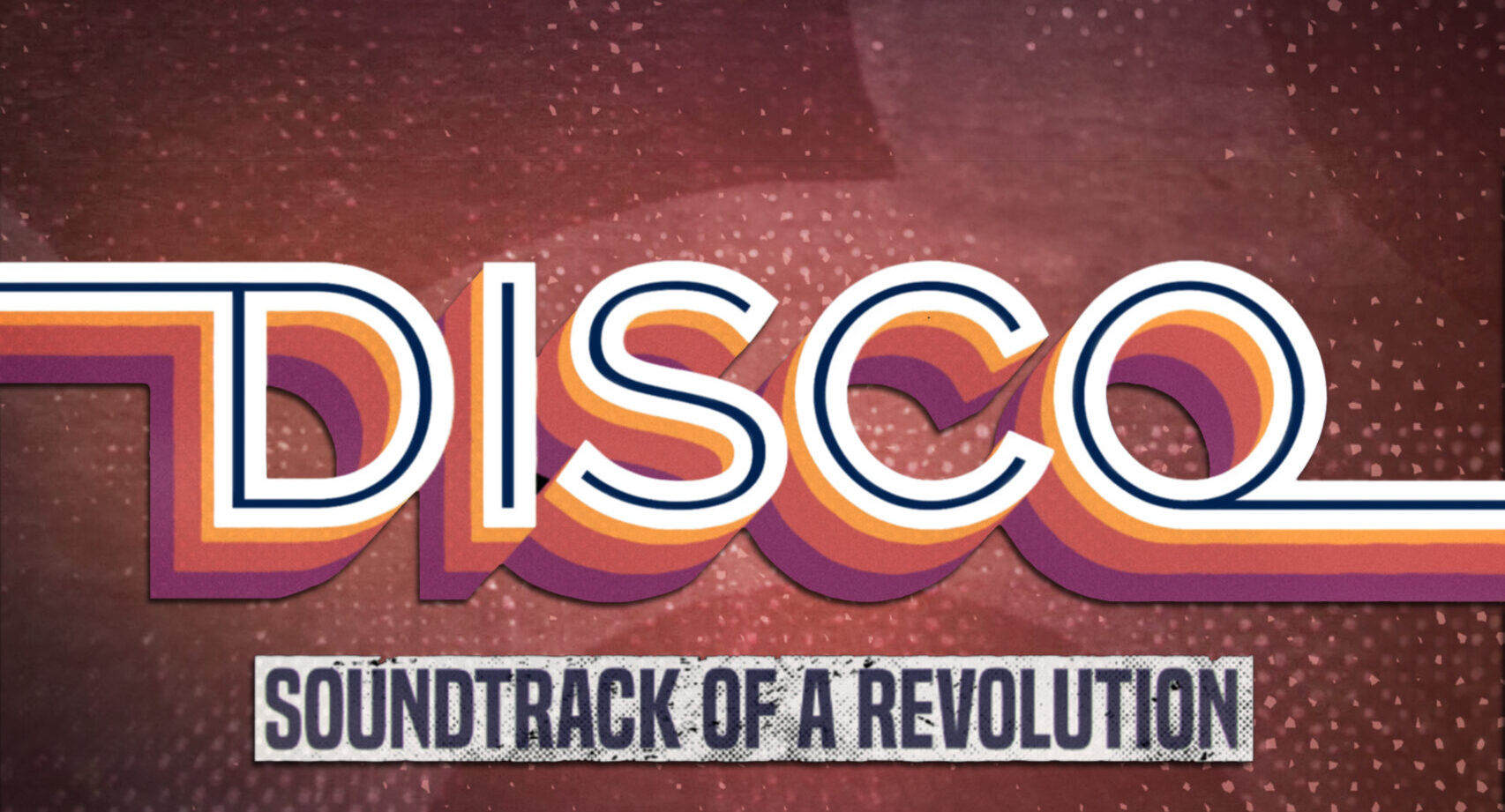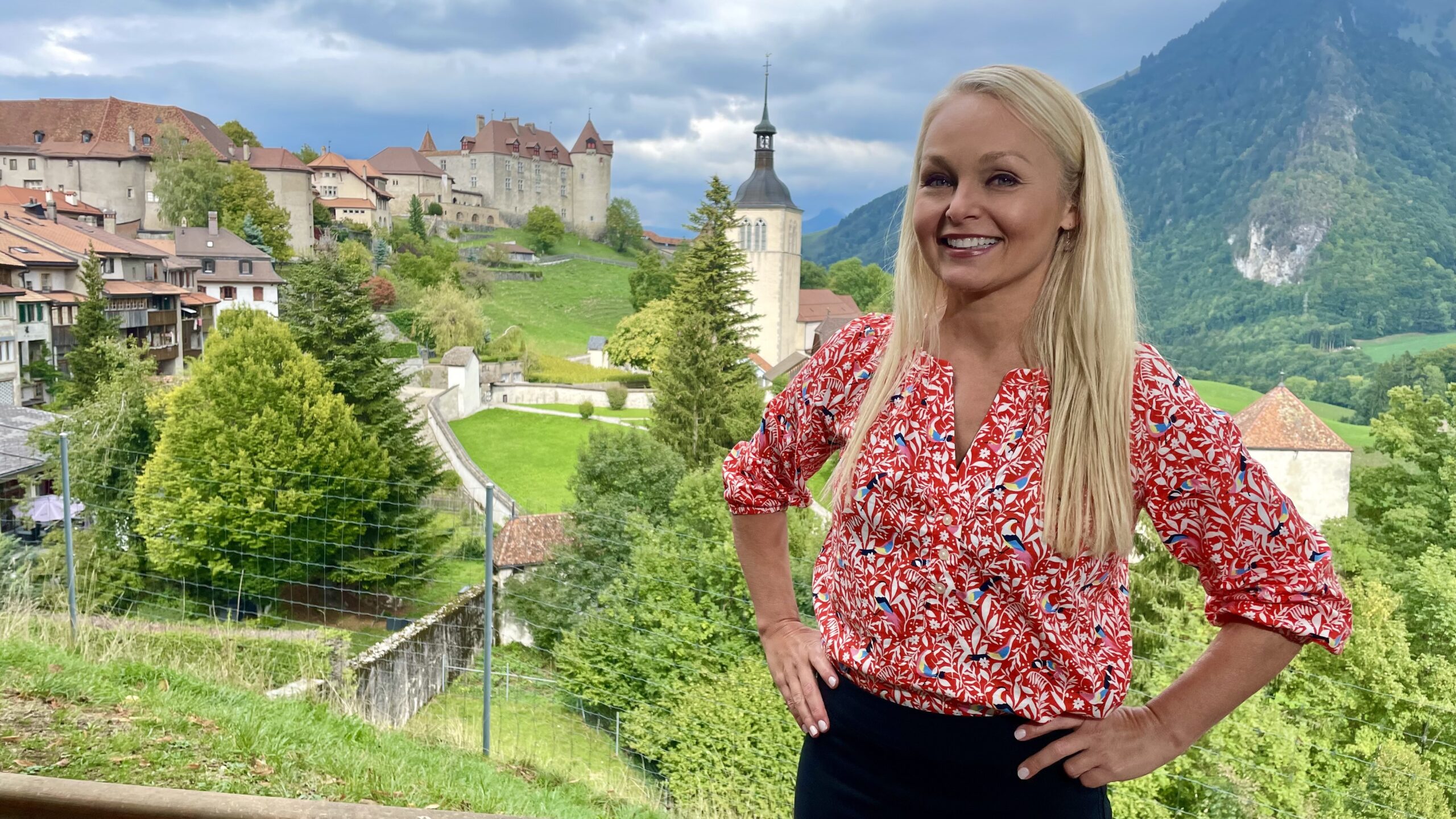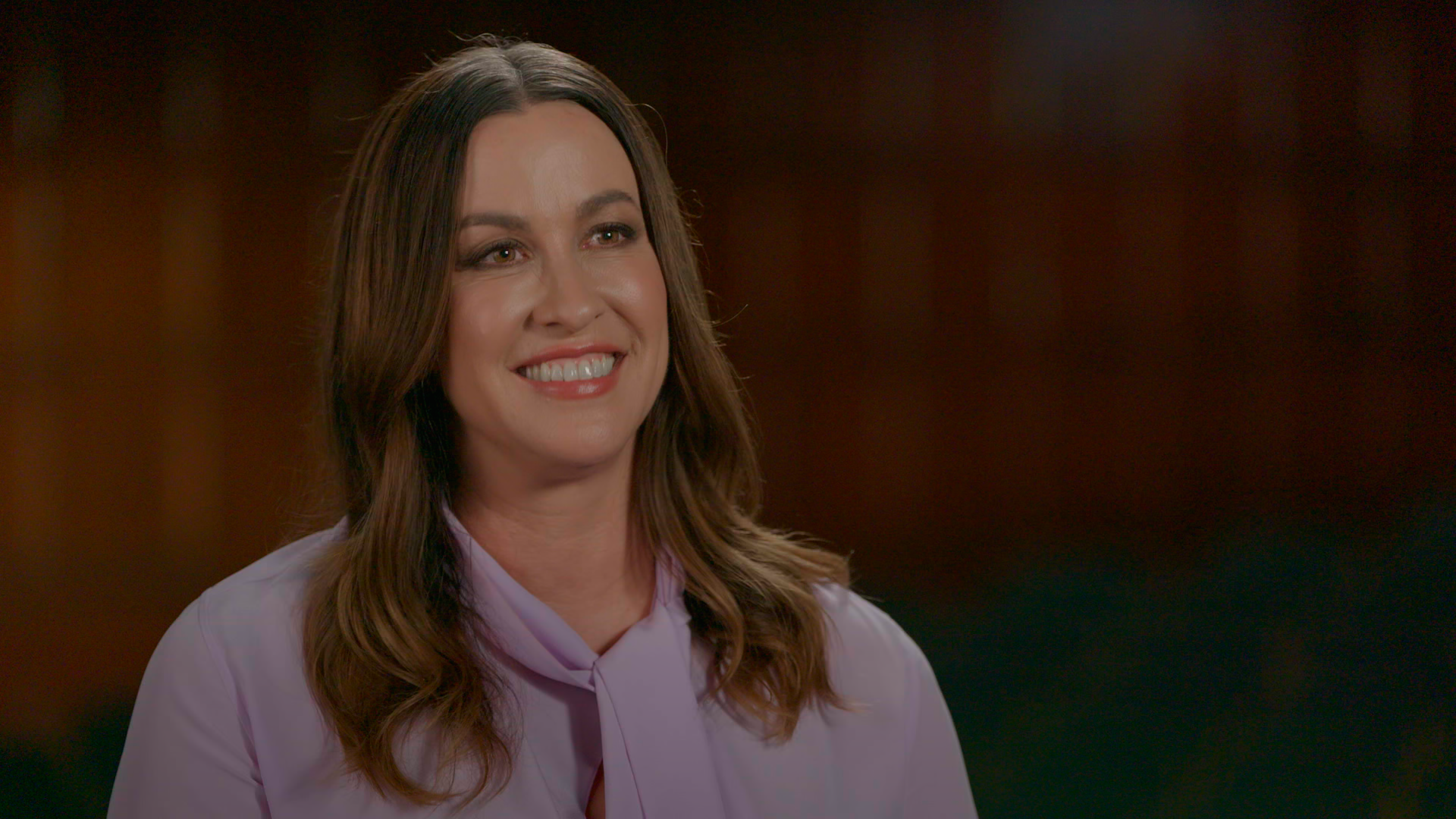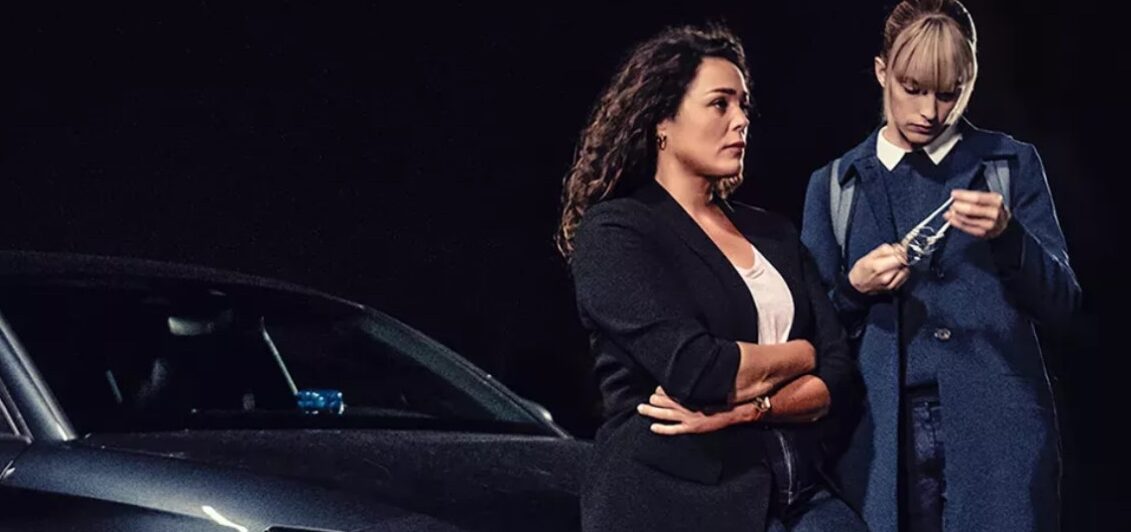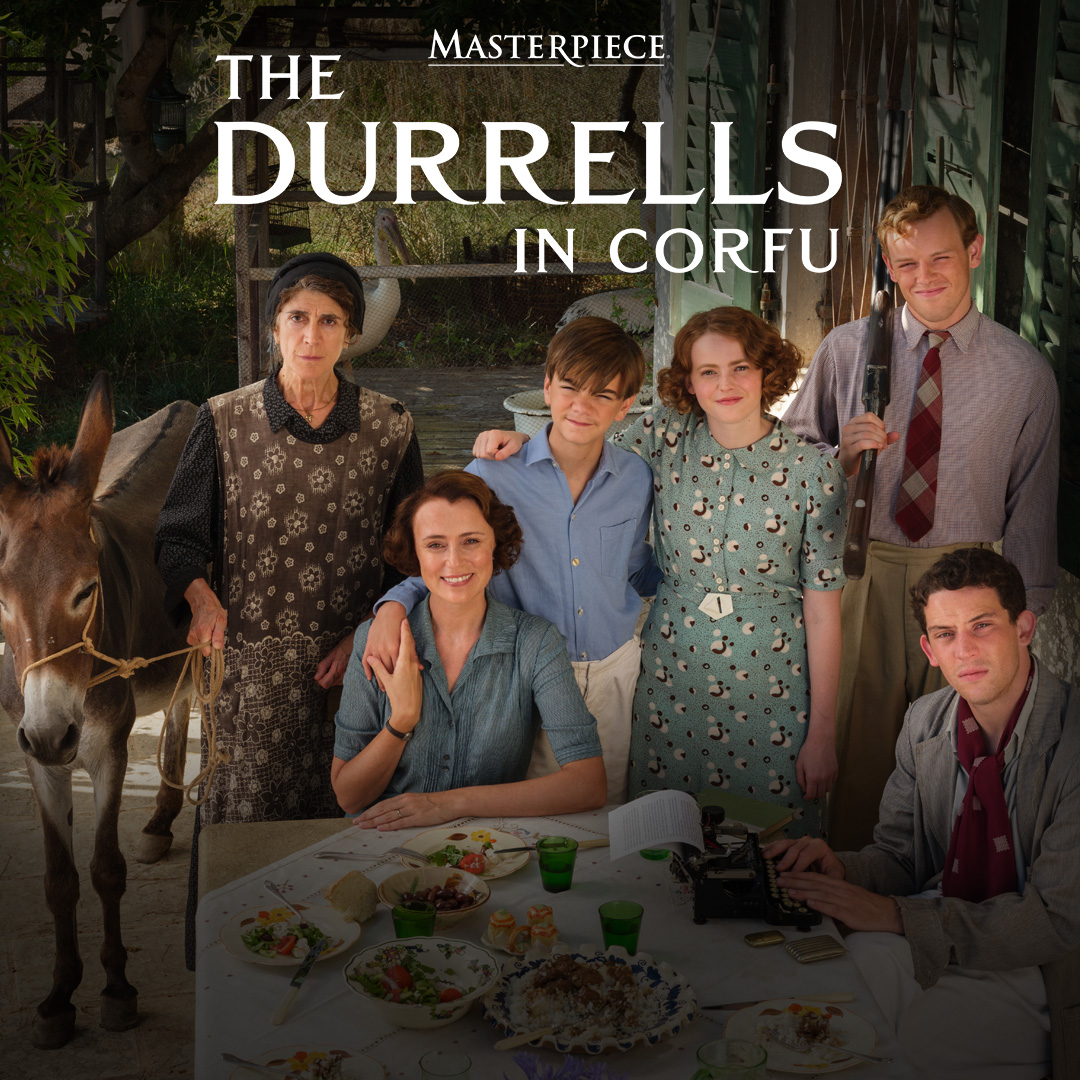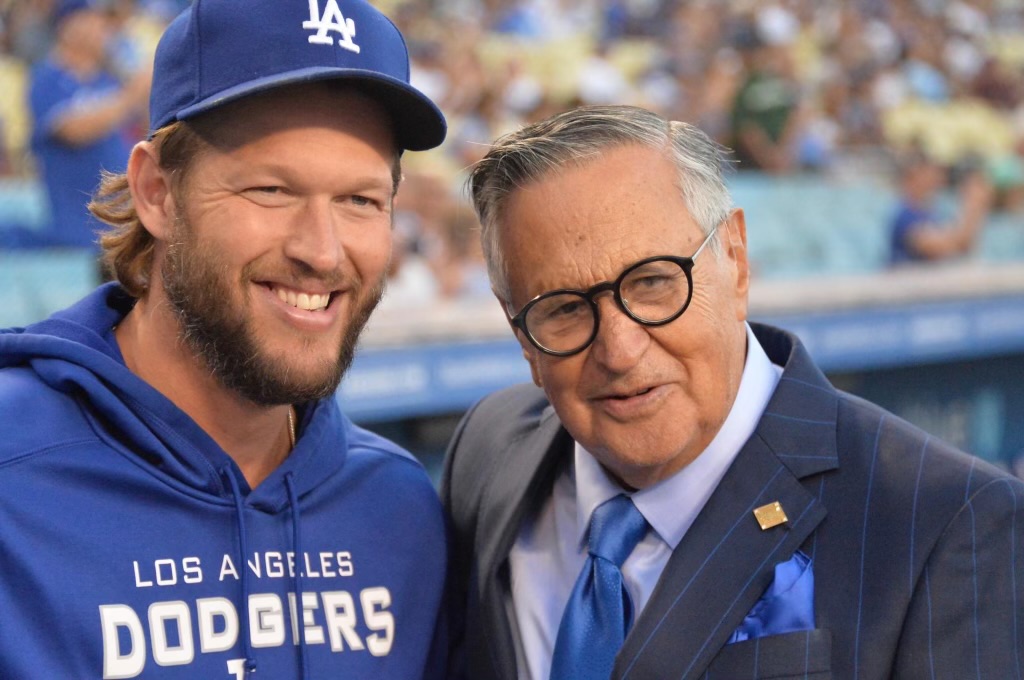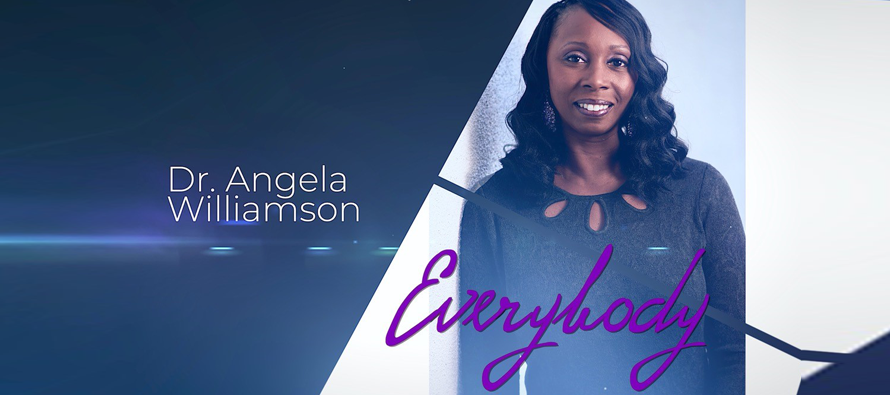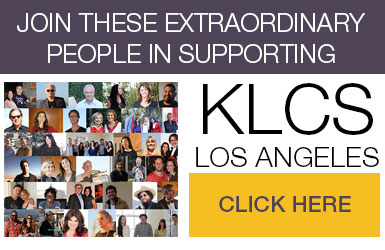Growing up, Bianca Borges, from “Christopher Kimball’s Milk Street,” would watch Julia Child on PBS with her mom; her mom would make dishes from “Mastering the Art of French Cooking.” Bianca talks to KLCS about the time she got to work with the PBS legend and what it’s like to now follow in those famous footsteps, the path that got her to this job, and her favorite restaurant in Los Angeles.
Bianca, what was your path to cooking and to this show?
My path to cooking began 40 years ago (laughs). I had moved to New York City, I was going to pursue a career in dance, but I was working in restaurants like everybody else in the industry and I found myself wanting to be in the kitchen with the cooks. My mother was an incredible cook growing-up, and I loved baking myself, so I started taking shifts in the restaurant kitchen instead of being out front. And then, I literally changed careers and I decided to become a fulltime cook and I worked in restaurants. I went to cooking school so I could then go back to working in better restaurants. From cooking school I ended up being a cooking instructor and from cooking instructor, I ended up learning about food styling and recipe development. I started doing that for various magazines and then started food styling for the Food Network and all sorts of TV stuff that came about; part of my client-base became the Today Show when they started doing cooking segments. From there, I ended up becoming the culinary director of the Today Show and I ran the culinary team, we did all the cooking segments for the four-hour live show. And then from there I met Chris Kimball when he was a guest on the Today Show. We sort of became friends, I already knew of him, of course, from “Cook’s Illustrated” and “America’s Test Kitchen” and that was one of my favorite, favorite publications, “Cook’s Illustrated” was. So I already admired Chris to begin with and then when I decided to leave the “Today Show,” he just happened to be starting up “Milk Street” and I said, “Hey, if you need an extra hand!” And that’s how it happened (laughs).
What happened in 2020 for the show, since it’s based on Chris traveling the world and bringing dishes back to show us?
Yeah, it’s based on Chris, and J. M. Hirsh, and they both traveled all over the world and brought back stories. So 2020 cancelled out a lot of travel, but fortunately we had a lot of recipes from previous trips that we just hadn’t used yet. So that was a perfect time to go back and find a place for these other recipes and now J.M. has started traveling quite a lot this year, so we’re refilling the bank, so to speak, with some really good travel stories and travel recipes and doing the same for the TV show.
So did you go back to the studio in 2020?
We were filming Season Four in March and just as we were finishing filming was when the shut down started happening, so that cancelled the travel which was supposed to be for Season Five and then we ended up filming Season Five in 2021, but we just did it later. So, people were already starting to travel and get about again, we did it in late spring of 2021 instead. So, it’s funny, I began the pandemic in Milk Street studio and then I didn’t technically end it, but the first time I went out again (laughs) was to the Milk Street studio to do the next season.
So what did you do for the bulk of 2020?
We were still running the magazine and the website, and the store, and doing all sorts of videos, not only for social media, but also doing some extra stuff that could potentially be part of the TV season. The filming of the TV show, the actual filming of it, is only for three to four weeks of each year. It’s a fulltime organization. We also have a fulltime cooking school, which used to be all in the Boston offices, it became online and that expanded like crazy, because not only were we doing online live streamed classes, as well as recorded classes, but then we started working with outside people, which we now have a whole category – Friends of Milk Street and these are people that are specialists in their field, whether it’s Moroccan or Filipino cooking, who are teaching specialty classes in those cuisines.
That was my next question, what do you do when you’re not doing the show?
I am a fulltime food Editor for Milk Street magazine. I started out doing recipe development and then became a Contributing Food Editor for both the cookbooks and the magazine. I was also on the TV show, so the rest of the time I was doing food editing, writing memos for outlining recipe development for certain recipes, focusing mainly on the travel recipes. I still do this, I research the travel recipes that our editors bring back or that we discover through other cookbooks and other authors that we’re working with; we do their recipes as well. So, I do extensive research on those and outline, for our development kitchen, how they should approach the recipe and what kind of parameters they should stay within for the cultural significance of the recipe. Early this year, 2021, I went from Contributing Food Editor to Food Editor. So, it’s been even more fulltime (laughs) than it already was.
Do you have a favorite go-to dish that’s quick and healthy?
Yes, my favorite personal go-to dish starts with a pot of beans. I’m not a vegetarian by any means, but I love cooking dried beans and I cook a different kind of bean almost every week. I make a big pot of beans and then I use that pot of beans to make quick meals. My favorite go-to healthy dish: I start with some hot beans at the bottom of the bowl, I sprinkle over some freshly grated parmigiana cheese. If I want meat, I’ll sauté some thick cut pancetta and throw that on top and then on top of that, I mix a salad of avocado and fresh tomatoes and any kind of lettuce I have or baby spinach, with just a little olive oil lemon juice; I put that on top of those rich, cheesy beans and that’s my healthy dish.
What’s the favorite part of your job?
When I first started with Milk Street, Chris knew me from the “Today Show,” so he knew what my skill set was and what he let me do was, he let me formulate what I wanted to do for Milk Street that could utilize the favorite part of what I have experience in. Slowly as my job has increased and I’ve become Food Editor, I’ve incorporated new skills and at the moment, I have to say, honestly, I love all of it. I love doing the research and the recipe development. I love the cooking show and being on air and on camera, I started out in performing arts so that feels very natural to me. But I also love working with people to come up with an entire magazine issue that makes sense, that has recipes from all over the world, a little bit of this, a little bit of that. The dishes that actually appeal to an American audience, but that teach them something new, something that’s literally going to change the way they cook, that’s going to open up their eyes to new flavors and new techniques. I love that. I did a fair amount of travel over my lifetime and I hope to still do that again, but I travel a lot. And any of us who love food, when you travel, you seek out the food of that culture, you want to learn and you want to taste something new and something different. And then, you come home and you try and make those dishes but you can only remember so much and you never really learned how to make the whole dish. What Milk Street aims to do is to bridge that gap for the American home cook. It literally has changed the way I cook and I’ve been cooking for 40 years professionally. But I have learned so many new things that are quick and easy and that have changed my perception of flavor and taste, even with all the travel I’ve done.
So you’re still keeping busy, now more than ever?
Yes, I am extremely impressed with the way this company adjusted and adapted during the pandemic. Did we have to change things? Yes; we changed a lot of things, but they were done swiftly and without too many hiccups. The most rewarding thing is we get readers who write in their opinions. The majority of them, thank goodness, are good and the most rewarding ones are the ones that say – during the pandemic, when they felt the most desperate, they could turn to Milk Street and it as it brought them comfort, it brought them joy, and it really gave them a sense of the world is going to be okay again. Those are literally words from different people that have written in. And that’s what food does for people and we’ve lost that sense of dining and eating with family and friends in a community of people, but if we could still get that pleasure in our own homes, cooking for ourselves, then that says a lot.
So far almost everyone’s had a Julia Child story or that she’s influenced them. Do you have a Julia Child story?
I absolutely do. I watched Julia Child with my mother. My mother was a great cook and she and I watched that show together. She had Julia’s book and cooked from it sometimes. So I grew up with Julia Child as my ideal (laughs) female cook and achievement and then when I started food styling, I got the pleasure of working with her when Julia’s baking book came out. I was hired by the publisher to do all the food styling for her New York City book tour. Everywhere she went she had dishes from the book and sometimes she did demonstrations from the book and sometimes she did television appearances. For anything she appeared in New York City with food, I was the one doing the food styling. The person that I am just enamored of and will never ever, ever forget working with, it would be that experience – working with Julia Child. And at the end she’s walking away with her publisher down the hallway and I couldn’t stop myself, I ran after her and said, “Can I just please give you a hug? It has meant so much to me to work with you.” And she was so generous and any question I had for her, she would stop what she was doing, she would look me in the eye and she would listen to my inquiry about the work I was doing with her and she would answer it. She never made me feel like I was just there to help out, she made me feel like part of the team. And I value that experience hugely.
How much time did you spend with her?
It was a span of three weeks, not that I saw her every day, but we had a couple of phone calls as we were doing the planning meeting and that was with the publisher, a group phone call that was long before Zoom existed (laughs). Once we would get on set and I was setting things up and she would come in to preview and walk through the demo, I got to be with her then. So I didn’t have any sit down meals with her, or any long involved conversations, but I got to work with her and it was one of the most fulfilling parts of my job.
Did you tell your mom you got to work with Julia?
I did. She knew I was working with Julia Child. I grew up in Alabama, so she was still in Alabama, but I would go home and we talked all the time, so she knew that. She passed away before I started working with Chris, but she knew of Chris and “Cook’s Illustrated.” It was one of the magazines we had around.
When you mentioned Julia to her, what did she say?
Her daughter had already moved to New York (laughs) so she knew that fabulous things happen in New York. I think my mom, her spirit at heart, she was a wanderer and a traveler. As a matter of fact, I was born overseas and she did a lot of traveling when I was an infant and then she ended up staying in Birmingham for the remainder of her life. She was thrilled that I was in New York, so I think it was a testament to her that amazing things do happen in the big city. (laughs)
Do you ever pinch yourself you get to do this for a living and follow in her footsteps of educating people to cook on TV now?
Absolutely, yes, yes, I pinch myself. It’s funny when I left the Today Show, friends and family just thought, “Oh, you’re retired now.” It’s like, “I left to do something new and different!” But I never imagined I would continue on to do something completely different in food. I literally thought I was going to do something different. And what I’m doing now is different and it’s a very fulfilling occupation. And yes, pinch myself is exactly how it feels. You nailed it.
Do you get recognized from the show and what’s the most popular question you get? And what’s your answer?
Every now and then I do. What’s funny is I have gotten recognized in Los Angeles when I was out to dinner with my daughter. I’ve gotten recognized here in New York City when I was at the Greenmarket. I got recognized in Boston. I go there about every month, just to [check] in and do tastings and be in the office for a few days every month. A woman in the elevator at the hotel, in the morning, with our masks on and everything, she looked at me and said, “Milk Street Kitchen?” (laughs) And I said, “Yes!” She goes, “I love that magazine, I love the cooking show and during the pandemic I poured through every issue and cooked my heart out from the magazine.” It was really a wonderful thing to hear. But as far as questions, the only question someone has asked me was like, “Is Chris really as irascible in person as he is on TV?” (laughs) It was a funny question. “Absolutely yes! But lovably irascible. (laughs) It’s true, he is, but he loves what he does and he’s committed to the home cook and that’s one of the reasons I like working with him.
As a cook, what’s your cleaning routine? Cleaning is the hardest part of cooking. Do you use Bar Keepers Friend and how often do you clean the stove top, nightly?
I do a spray down most nights because I do tend to cook with high heat, which splatters a lot. So I do a spray every night and every now-and-then I’ll yank out the Comet or the Bar Keepers Friend, which is a good one, I have both of those under my cabinet.
What does that mean, a spray down?
With a spray cleaner, I use an eco-friendly orange-based spray cleaner.
When you sauté, don’t the cabinets get mucky?
Yeah and the backsplash gets mucky. If you want a new product, it’s called “Frywall” and it’s a big silicone cone that has no point on it, it’s cut off and it fits inside your saute pan. It makes your sauté pan the shape of a wok. It’s a big wall, a silicon sleeve that fits inside your sauté pan and you can cook at really high heat, you can do a fast sauté or a stir fry, the oil spatter doesn’t get all over your stove. It stays inside the Frywall, I’ve been trying to get them, to put it in the magazine.
Do you clean the grease off the cabinets nightly? My cabinets get greasy.
I don’t do it nightly, no way, (laughs) I usually do it before company comes over to be honest, which means it hasn’t been done in a long time.
Do you clean the grate in the vent above the stove and take it out all the time?
I do that about once a year.
Do you ever just indulge and watch a bunch of PBS cooking shows or is too much like work?
It is, it is like work and I never have a span of time like that. Usually the only time we watch TV is the end of the evening and you’re just exhausted and you want something that you’re not thinking about it. We watch some serious dramas too, but you want something to entertain you and not something that you have too much relationship with.
What keeps it fun for you? Like you said, your friends thought you would retire, but you still work, so what keeps it fun for you?
The new responsibilities. Not only digging deep into food all over the world, all of which I’m somewhat familiar with, but I don’t have the down-and-dirty details of, and then doing the food editing, that for me is new. And, that uses my brain and my intellect in a different way than I was using it before. So I like that, I appreciate that. As I get a little bit older, I’ve accumulated all this experience. And now, I can use the bulk of it toward doing something different. And that is fulfilling. One thing about the “Today Show,” I worked there for 14 years, but every single day was different. And usually, it would sometimes change overnight (laughs) from what I thought it was going to be, so I’d come in the morning and there was a constant change. And my attention span, it kind of needs that. So, same thing here at Milk Street, every issue is different, every set of recipes is different. We travel the world; we look at different techniques. Take something as common as flat bread, somebody will bring back a flatbread and it’s like, “Do we really need another flatbread in the magazine?” It’s like, “Yes, because this one is so different.” Bread has been made by civilization or humanity since the beginning of time, ever since humans learned how to cultivate grain. And this was made for a sense of nutrition, inexpensiveness, and also quickness. You have Turkish flatbreads that are made with yogurt, Umbrian flatbreads with no yeast in them, from flour, baking powder, salt and olive oil. That’s the only ingredients in them. Moroccan flatbread with seeds in them. And then this Palestinian yellow bread in one of our recent issues has anise seed and is just slightly sweet. They’re just fabulous. You can travel the world through bread. And the Asian flat breads – the little buns with rice flour.
You mentioned L.A.; where do you like to go eat and food shop in L.A.?
Yes, my youngest daughter moved to L.A. like a year before the pandemic and I was out also doing Milk Street segments on “Home and Family.” When I came to visit, we would usually go out to eat. Every now and then we would cook, but we would go to where my daughter liked to shop. I want to dig deeper into L.A. and I was actually looking forward to it this year; I was going to be visiting more often. We went there twice because I liked it so much, it was in Silver Lake, it was a female chef, I thought she was just doing extremely interesting things and I asked to go there again when I came back. It’s called Kismet. I didn’t know anything about it when we went, my daughter had chosen it, so my impression of the food was based on taste alone. This was before the pandemic, but the meal at the time was memorable.
Is there anything you’d like to add?
You had asked about the TV season when we started, Season Five is going to air throughout the winter. But we’re planning Season Six, we have some travel back in, as well as more chefs from around the U.S., doing their specialties. There’s some from L.A. and from the South. So, we have more friends of Milk Street that we’re working with in that regard and there will be more authentic travel coming back in.
-/-/-/-/-/-/-/-
Milk Street airs Saturdays at 1:30 PM. Visit klcs.org/schedule for a full broadcast schedule. You can catch up with Bianca on her social media; follower her on Instagram (instagram.com/bibifood) or visit the Milk Street website (177milkstreet.com).

